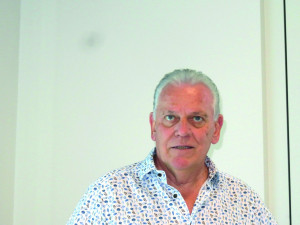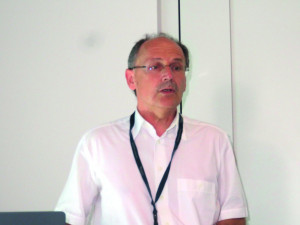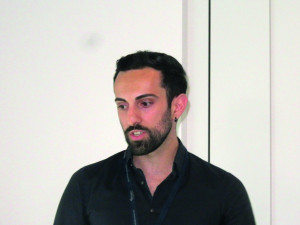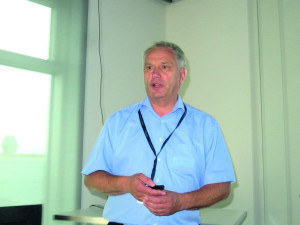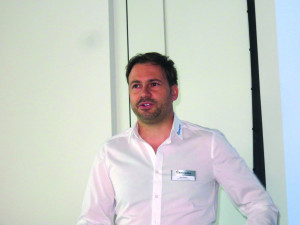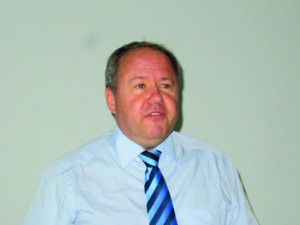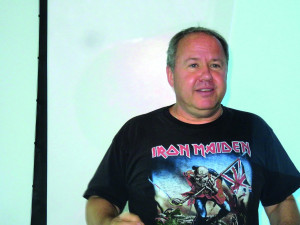In addition to a great deal of technology relating to electronics production, the Eltroplan Group's 7th Technology Day also focused on the issue of component availability and corresponding solutions. The motto mentioned in the title was taken up by well-known specialist speakers from the industry - the highlight was the keynote speech by Tobias Schrödel on IT security.
Michael Pawellek, Managing Director of the company, addressed the current situation in his welcoming speech. The Technology Day, which had actually been scheduled for the previous year, had to be postponed until the coronavirus situation eased and this in-person event was now possible again at the turn of June/July 2022. Eltroplan is delighted that so many people accepted the invitation to the Technology Day again. Pawellek quoted Henry Ford: "Success consists of having exactly the skills that are in demand at the moment." The quote is as apt today as it was in his day. Knowledge has become one of the most important resources in global competition.
The company, which has more than 40 years of expertise in electronics development and production and is constantly expanding its portfolio for demanding markets such as automotive, aviation, medical technology and industry, has remained active and innovative during the crisis. On June 24, 2022, it received the 'Top Innovator' award as one of the most innovative companies in Germany for the third time at the Jahrhunderthalle in Frankfurt.
Current milestones in the company's development include
- Acquisition/foundation of Eltroplan Industrial in Stockach in 2015
- Foundation of Aristos, a joint venture with Kaiser Ingenieurbüro and PLC2 (full-service provider for electronics, mechanics and software) in 2017
- Foundation of Vientum (air purification systems to eliminate coronaviruses, bacteria, etc. using innovative ionization technology) last year
Pawellek concluded by talking about a new major project aimed at reducing energy costs through parking lot photovoltaics. A solar park is currently being built on the employee parking lot, which, as the Managing Director explained in detail, "costs a lot, but is an energy concept with vision."
Gustl Keller, Eltroplan Engineering GmbH, moderated the presentations and began by pointing out that Eltroplan is already well on the way to sustainability. He explained what is meant by sustainability and the associated challenges and opportunities for EMS companies. General examples of environmental protection in the e-supply chain are the circular economy (to protect the environment and conserve resources), theCO2 footprint(for climate protection) and energy efficiency. Keller also listed the resource-saving and compensation measures that Eltroplan has already implemented. For example, fossil fuels are no longer used and renewable energies are used. His conclusion: "There is further potential, i.e. opportunities for the future, and Eltroplan is actively contributing to improving thecarbon footprint of its customers' products."
Advantageous eco-balance of tin recycling
Lothar Pietrzak, MTM Ruhrzinn GmbH, Essen, made it clear thatCO2 neutrality can be achieved through the circular economy, based on the eco-balance of tin recycling. Compared to tin extraction from ore, only just under 1% energy is required and less than 1%CO2 is emitted. And this with the same tin quality. Pietrzak explained what his company offers for tin recycling and the recycling of other metals. Containers are provided for the collection of waste products from soldering processes and it is certified down to the gram what has been collected and recycled.
Gentler joining processes for die bonding
Prof. Dr.-Ing. Jürgen Wilde, Institute for Microsystems Technology at the Albert-Ludwigs-Universität Freiburg (IMTEK), provided information on TLP bonding in electronics and other new processes for die bonding. Transient liquid phase bonding (TLP) with Ag-Sn multilayer films instead of Ag-Sn phases was investigated. The advantages are the shorter diffusion lengths and times as well as the resulting thicker (> 30µm) and more homogeneous bond layers. The TLP process and the results achieved (including data from reliability tests) were described and compared with those of other processes for die bonding (Ag sintering and Klett welding) on various substrates. In the meantime, another research project on a gentler TLP joining process at process temperatures below 150°C by using ternary systems (LowTemp TLP) is underway.
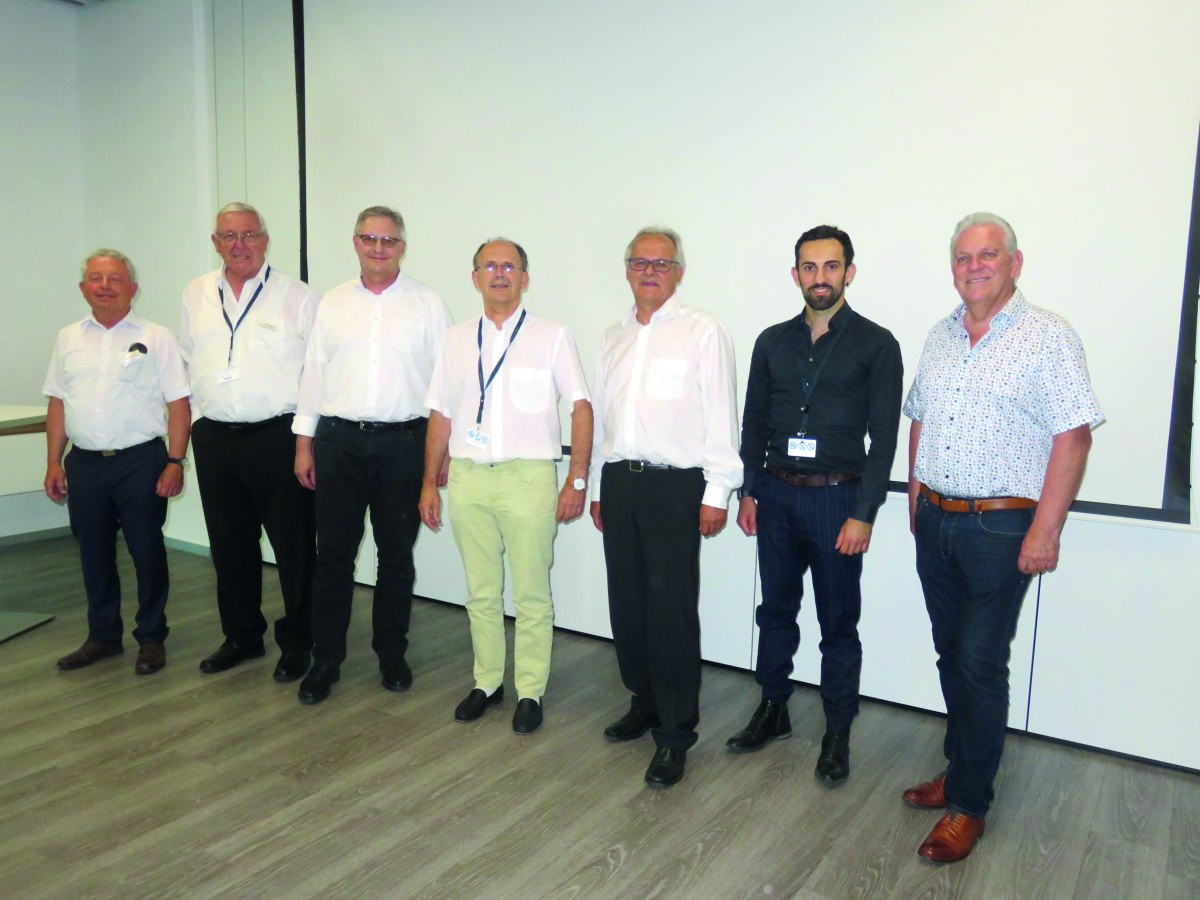 Speakers of the first day with Eltroplan CEO Michael Pawellek
Speakers of the first day with Eltroplan CEO Michael Pawellek
Time-accelerated reliability test for printed circuit boards
After introducing his company and its portfolio, Eren Bektas, Optiprint AG, Berneck, Switzerland, explained how PCB reliability can be ensured in an accelerated manner using the Interconnect Stress Test (IST), thereby speeding up product qualification. PCBs are exposed to thermal stress during processing and operation. Stress tests can be used to check whether the reliability meets the requirements. In the temperature cycling test (TWT), the test specimen is alternately placed in two climatic chambers at -40°C and +125°C and tested after a dwell time, which leads to long test cycles and takes a correspondingly long time for many test cycles. With IST, the test coupons are heated electrically to 150°C (3 min) and cooled down to room temperature in 2 min, which results in significantly shorter test cycle times. Bektas explained in detail how the IST is carried out and how the test coupons required for this are designed. He also showed typical error patterns of PCBs and named their causes as well as possible remedial measures.
Low temperature soldering is an alternative
Helge Schimanski, Fraunhofer ISIT, Itzehoe, reported on low-melting solders in electronics production. If the coefficients of thermal expansion (CTE) of the printed circuit board and components differ, open solder joints can occur as these warp at the high soldering temperatures of the SAC reflow soldering process. This effect is less pronounced when soldering at lower temperatures. However, low temperature soldering (LTS) with SnBiX solders is only possible if the mission profile is suitable. LTS tests with a selection of components showed no significant differences in wetting and the properties of the resulting solder joints compared with SAC. However, depending on the LTS solder paste, the stencil openings may have to be adapted, for which Helge Schimanski presented an example.
Component availability and solution approaches
Axel Frank, Eltroplan Engineering GmbH, looked at the current problems regarding component availability and possible solutions. He presented data from the media and distributors' websites on the situation, which has been ongoing for some time now. One possible remedy is broker goods, but there are black sheep. In any case, approval must always be obtained from the customer. It also makes sense to check the components for fakes by comparing original and brokered goods.
X-ray inspection of the internal structure, determination of the weight of the components, checking the labeling (imprint) and/or an electrical test are possible here. Further remedial measures include the removal of components from application boards or from older or defective assemblies as well as the replacement of components on the assembly with partial layout changes or a modification board.
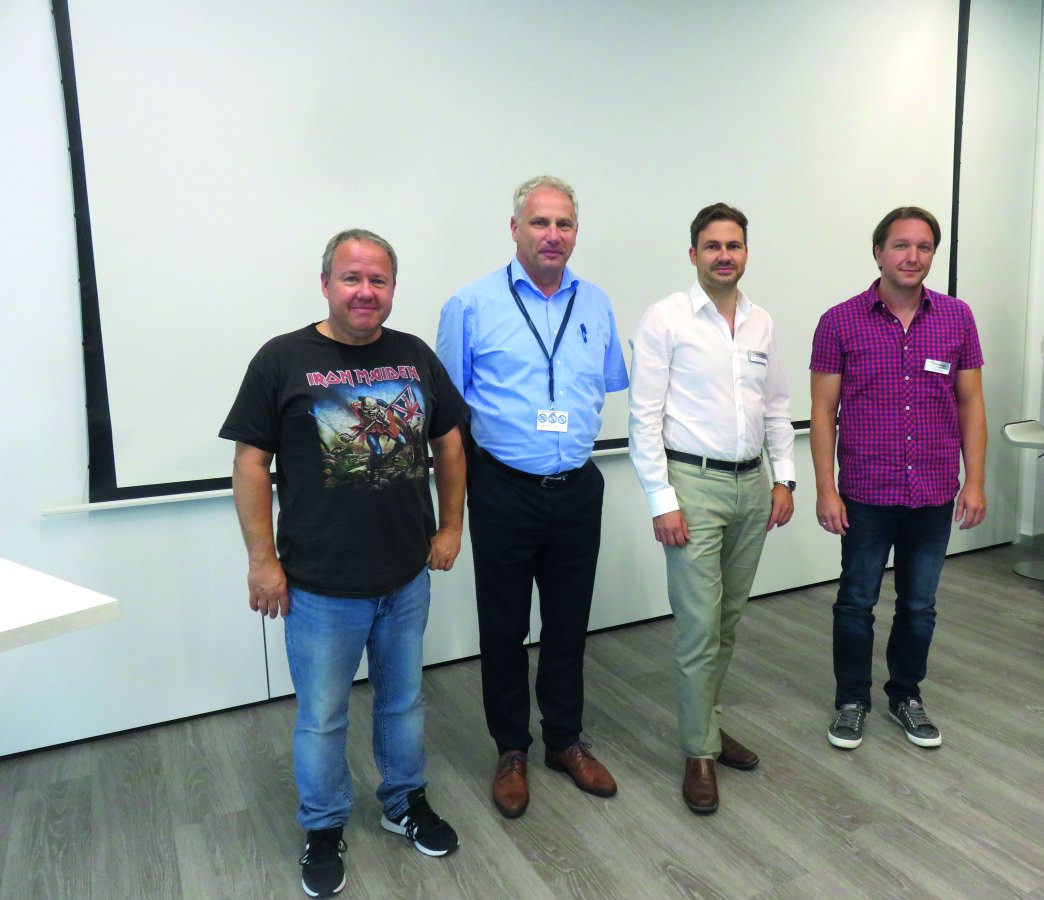 Speakers on the second day with keynote speaker Tobias Schrödel
Speakers on the second day with keynote speaker Tobias Schrödel
For new developments, Frank recommended only carrying out the developments with available components and checking whether the components are still available - during and after the development phases - but also checking which usable components could possibly be available in the course of development.
New possibilities for electrical testing
Olaf Römer, ATEcare Service GmbH & Co KG, Aichach, provided information on new possibilities for electrical testing based on the history, problems and current requirements. High test coverage requires a test strategy. Inline AOI, possibly with automatic sorting, is common today. While isolated solutions and manual operation are common in electrical testing. In contrast to ICT, Manufacturing Defect Analyzers (MDA) can be operated inline and offline.
Combination solutions based on MDA with functional testing are also possible. Olaf Römer listed the many possibilities, including the adapters. Today, these range all the way to AI-based root cause analysis. It is also important to generally optimize test coverage, throughput, costs and the IT connection. This starts with the use of CAD data as a starting point. Hardly anything works without design for testability and GERBER data does not work at all.
The design must include test points. If appropriate circuit diagram data is available, many things are easy to implement, from the creation of adapter data to cost analysis, documentation, reports and automatic circuit diagram display through to repair software. Information was also provided on adapter construction, functional test solutions, boundary scan, in-system programming and the use of flying probe systems.
Sharing knowledge with your own wiki
Jan Kokert, Eltroplan Engineering GmbH, presented the EltroWIKI set up at Eltroplan to share knowledge. He looked at the history of knowledge management and explained the wiki principle, which includes editing without HTML code (Web 2.0) as well as version management (Who? When? What?) and the option of restoring, full-text search and linking.
Kokert then went into the original formatting and the characteristics of company wikis. They are images of the corporate structure, have user access control for confidentiality/data protection and interfaces for importing/exporting files and for links to the intranet. They differ in their target and application orientation according to the corporate context. The EltroWIKI is based on open-source SW (GNU General Public License). It is not a database, but thanks to over 1300 plugins it is highly customizable.
The structure is organized by sections and namespaces. 'Click' instructions make it easy to get started and work with the EltroWIKI. Setting up and editing documents is also easy. Examples were used to illustrate how this works and what can already be found in the EltroWIKI.
3D printing for quick solutions
Thomas Bernard, Eltroplan Engineering GmbH, showed how to get from the idea to the product with additive manufacturing using 3D printing. In additive manufacturing, the material is applied layer by layer and production takes place directly from the 3D data. The greatly reduced throughput times and topology optimizations are also advantageous. Requirements from in-house production or from customers for tools/devices, test adapters, plug-in aids, housing shells for thermal applications and much more can be realized at short notice. Thomas Bernard presented the two processes available at Eltroplan - the FDM process (fused deposition modeling) and stereolithography (STL) - as well as their procedure and special features. The latter can be used to create injection moulds, casting tools and vacuum tools, for example, using heat-resistant resin.
Smart inspection robotics for 3D quality control
Visual/manual quality control provides inconsistent inspection results due to operator influence. Automatic quality control with customer-specific, permanently installed inspection setups or with general SPI, AOI and AXI solutions is very complex or can only be used on one surface. In his further contribution, Olaf Römer, ATEcare, showed that smart inspection robotics is much more favorable here: This is extremely flexible (product change at the push of a button), has many advantages - such as excellent defect detection, which is repeatable and consistent - and offers traceability with automatically generated inspection reports and archiving. It is also user-friendly (graphical interface) and the inspection plan can be created based on CAD data. The capabilities of smart 3D quality control were illustrated using examples of inspection criteria and results.
Keynote with a look into the IT poison cabinet
Tobias Schrödel, a live hacker and IT security consultant who had appeared live on RTL the previous evening, gave a very special presentation on the topic of IT security. It was a must-see highlight. Because he knows the tricks of the criminals and showed, among other things, how to get into the Darknet, that even there are terms and conditions and what is on offer there. These include weapons and drugs, malware tools and lots of files with hacked passwords.
Tobias Schrödel transformed himself into a stylish hacker during his keynote presentation
Schrödel gave a live demonstration of how easily and quickly you can get hold of third-party data by looking into the IT poison cabinet. Names and even combinations of names with numbers are taboo as passwords, as these can be cracked in seconds using the appropriate tools. Passwords should be long and always contain special characters. And this was not the only thing that gave those present food for thought. Because everything he demonstrated showed vulnerabilities that are present almost everywhere and urgently need to be eliminated.


